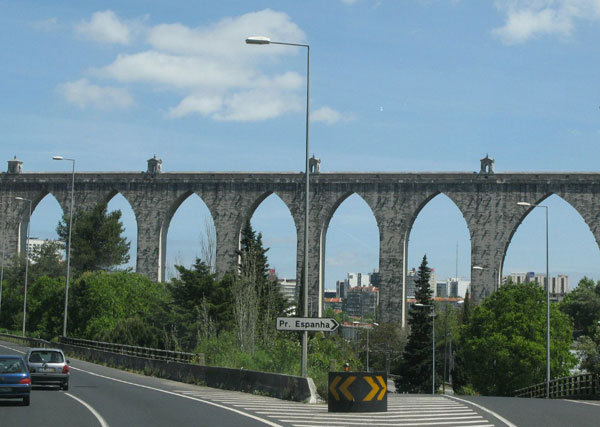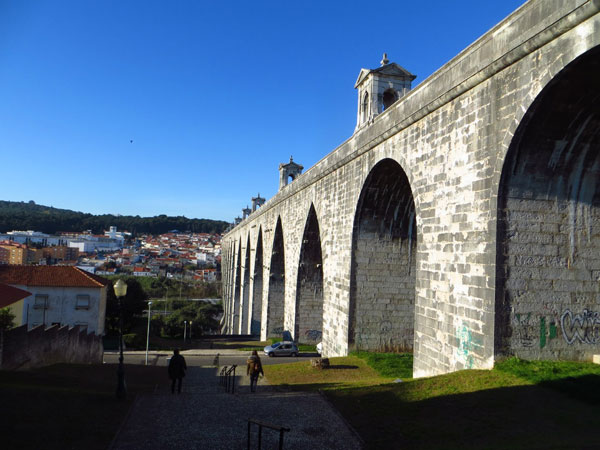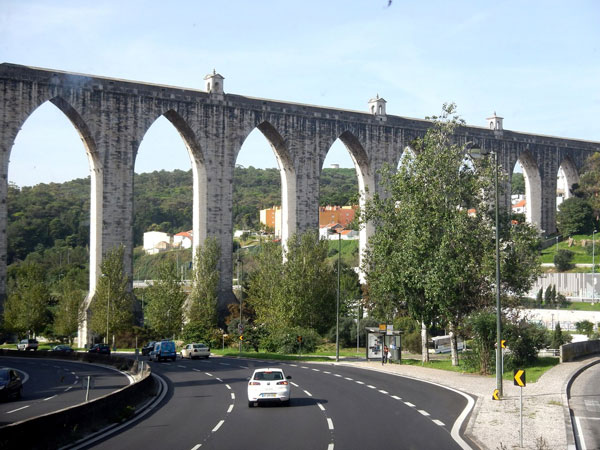The Águas Livres Aqueduct (Portuguese: Aqueduto das Águas Livres, pronounced: [ɐkɨˈdutu dɐʃ ˈaɡwɐʃ ˈlivɾɨʃ], "Aqueduct of the Free Waters") is a historic aqueduct in the city of Lisbon, Portugal. It is one of the most remarkable examples of 18th-century Portuguese engineering. The main course of the aqueduct covers 18 km, but the whole network of canals extends through nearly 58 km.
The city of Lisbon has always suffered from the lack of drinking water, and King John V decided to build an aqueduct to bring water from sources in the parish of Caneças, in the modern municipality of Odivelas. The project was paid for by a special sales tax on beef, olive oil, wine, and other products.












